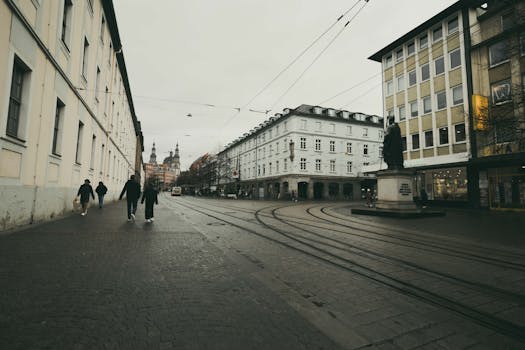
Urban Green Spaces: The Future of Outdoor Living in European Cities by 2025
Urban Green Spaces: The Future of Outdoor Living in European Cities by 2025 is a concept that has gained significant attention in recent years. As the world becomes increasingly urbanized, cities are facing numerous challenges, including pollution, climate change, and a decrease in green areas. However, European cities are taking a proactive approach to address these issues by investing in urban green spaces, which are transforming the future of outdoor living.
Introduction to Urban Green Spaces
Urban green spaces refer to areas in cities that are dedicated to parks, gardens, and other green areas. These spaces provide a range of benefits, including improving air quality, reducing noise pollution, and promoting biodiversity. Urban green spaces also offer citizens a chance to connect with nature, relax, and engage in physical activity, which is essential for both physical and mental well-being.
In European cities, urban green spaces are being designed and developed with sustainability in mind. This includes using green roofs, rain gardens, and permeable pavements to manage stormwater runoff and reduce the urban heat island effect. Additionally, cities are incorporating green infrastructure, such as green walls and urban forests, to improve air quality and mitigate the impacts of climate change.
Benefits of Urban Green Spaces
The benefits of urban green spaces are numerous and well-documented. Some of the most significant advantages include:
- Improved mental health and well-being: Spending time in nature has been shown to reduce stress levels, improve mood, and enhance cognitive function.
- Increased physical activity: Urban green spaces provide citizens with opportunities to engage in physical activity, such as walking, cycling, and sports, which can help to reduce the risk of chronic diseases.
- Enhanced biodiversity: Urban green spaces can provide habitats for a range of plant and animal species, which can help to promote biodiversity and ecosystem services.
- Climate change mitigation: Urban green spaces can help to reduce the urban heat island effect, manage stormwater runoff, and sequester carbon dioxide.
In addition to these benefits, urban green spaces can also play a critical role in promoting social cohesion and community engagement. By providing public spaces for recreation, relaxation, and socialization, urban green spaces can help to build stronger, more resilient communities.
Examples of Urban Green Spaces in European Cities
There are many examples of urban green spaces in European cities that demonstrate the potential of these areas to transform outdoor living. Some notable examples include:
- The High Line in London: An elevated park built on an old rail line, which provides citizens with a unique green space for recreation and relaxation.
- The Park de la Villette in Paris: A large public park that features a range of green spaces, including gardens, forests, and wetlands, which provide habitats for a range of plant and animal species.
- The Superkilen park in Copenhagen: A public park that features a range of green spaces, including gardens, playgrounds, and sports facilities, which promote physical activity and social cohesion.
These examples demonstrate the creativity and innovation that is being applied to the design and development of urban green spaces in European cities. By prioritizing sustainability, biodiversity, and community engagement, cities can create green spaces that not only improve the quality of life for citizens but also contribute to a more resilient and sustainable future.
Conclusion
Urban green spaces are a critical component of sustainable and resilient cities. By providing citizens with access to nature, promoting physical activity, and enhancing biodiversity, urban green spaces can help to address some of the most pressing challenges facing European cities. As we look to the future, it is essential that cities continue to prioritize the development of urban green spaces, incorporating green infrastructure, and promoting community engagement and social cohesion.
By doing so, European cities can create a better future for their citizens, one that is characterized by improved mental and physical health, enhanced biodiversity, and a more sustainable and resilient environment. Urban Green Spaces: The Future of Outdoor Living in European Cities by 2025 is a concept that has the potential to transform the way we live, work, and interact with our surroundings, and it is an idea that is worth pursuing.






